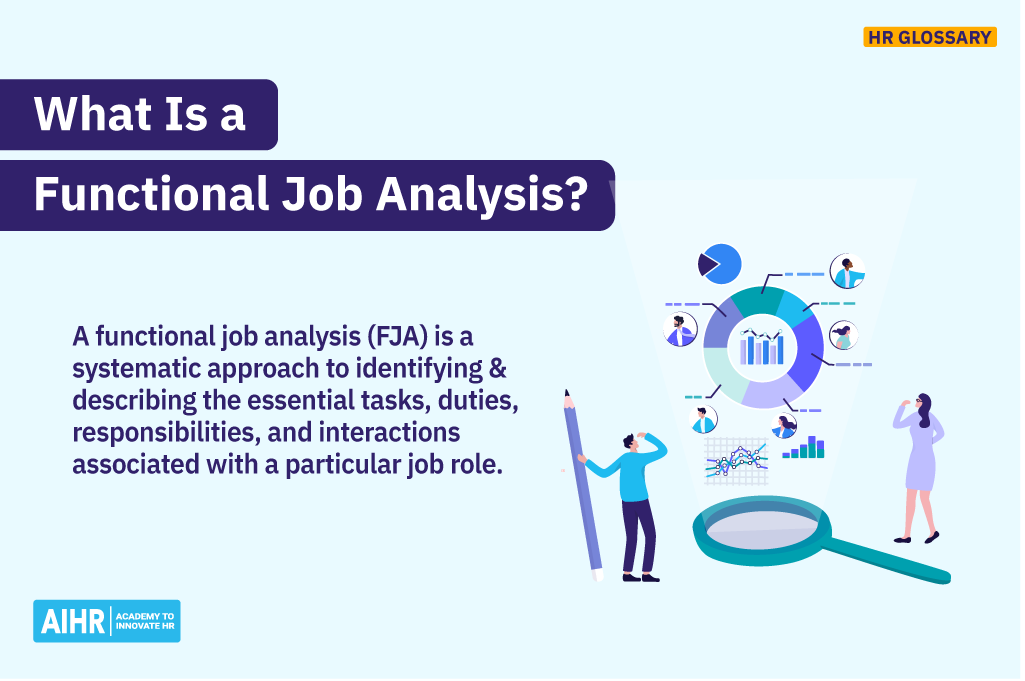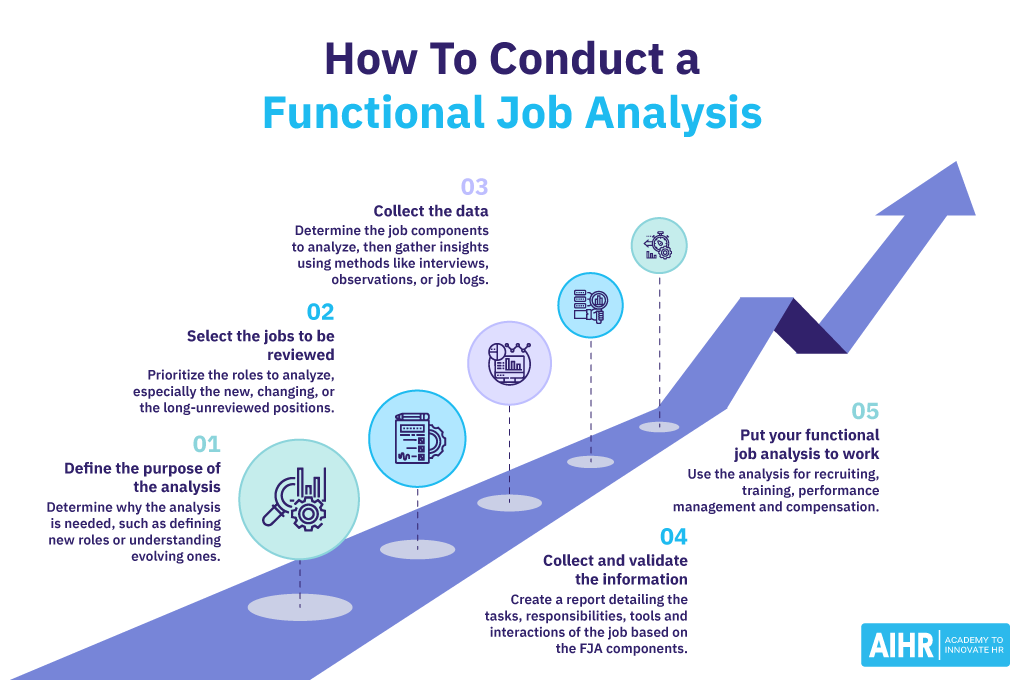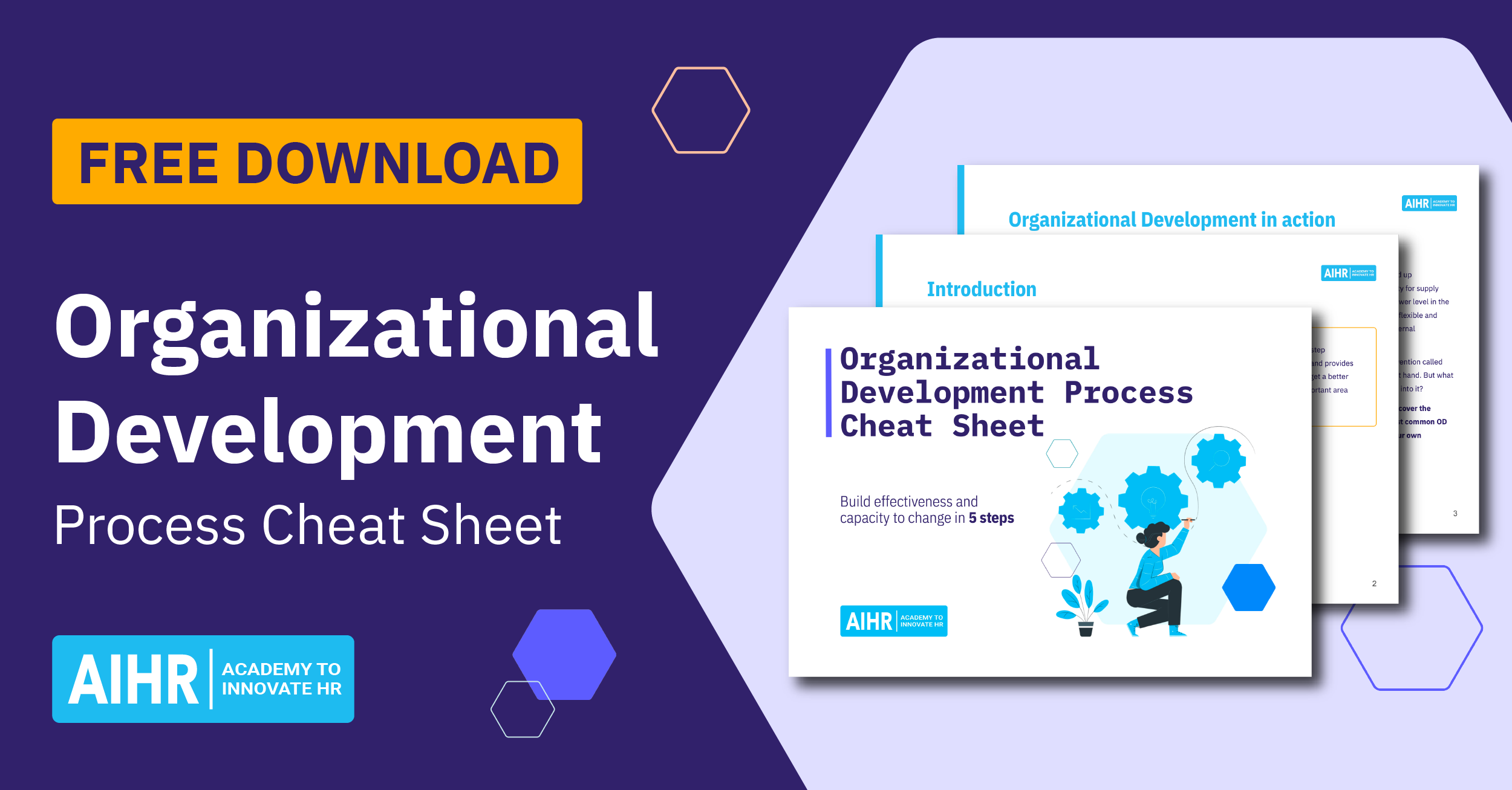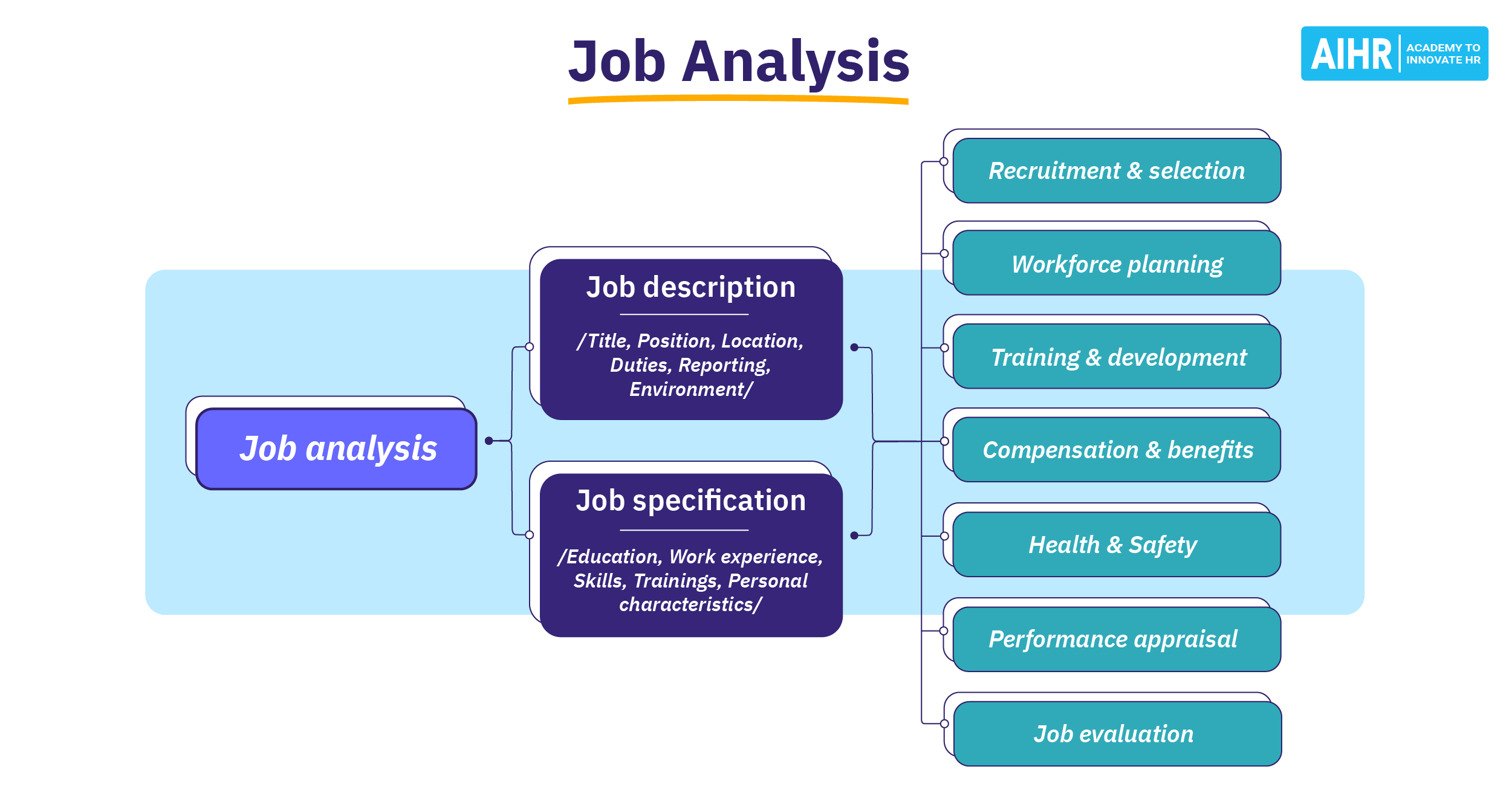Functional Job Analysis
What is a functional job analysis?
A functional job analysis (FJA) is a systematic approach to identifying and describing the essential tasks, duties, responsibilities, and interactions associated with a particular job role.
Rather than just listing the tasks, functional job analysis focuses on the functions and behaviors involved in a job. This information helps businesses:
- Write more detailed and accurate job descriptions
- Identify the right candidates for jobs that need to be filled
- Conduct training needs analysis
- Design fair salary structures.
Functional job analysis (FJA) is one of the most common job analysis methods. Other popular methods are critical incident technique (CIT) and task inventory.

Components of a functional job analysis
Functional job analysis examines several components of a job role. The purpose is to gather as many details as possible about the job’s day-to-day functions, so the results can be used for HR-related efforts.
The three typical job components analyzed are ‘things’, ‘data’, and ‘people’. Let’s examine them more closely.
| Job component | Explanation | Example |
| Things | Physical objects and tools involved in the job. | Hammer, computer, specific software, vehicle. |
| Data | Information, facts, and figures the worker deals with. | Sales report, customer feedback, inventory data. |
| People | Interactions and communications with others. | Collaborating with a team, assisting a customer |
The expanded version of FJA comprises four more components:
| Job component | Explanation | Example |
| Worker Instructions | Guidance or directives given to the worker. | “Assemble the product as per manual”, “Follow the safety guidelines”. |
| Reasoning | Cognitive skills and decision-making abilities required. | Solving a technical glitch, or determining the best marketing strategy. |
| Maths | Numerical and quantitative skills needed. | Calculating expenses, setting a budget. |
| Language | Ability to read, write, and communicate effectively in the context of the given job. | Writing a project proposal, or reading a technical manual. |
Depending on the job being analyzed, HR must determine which components or dimensions are critical to analyze, as not all dimensions are relevant to each job.
Example of a functional job analysis
Drawing on the seven components discussed above, here’s what a functional job analysis might look like for a job in an accounts payable role.
Job title: Accounts Payable Specialist
- Job purpose: To manage and process the receipt and payment of invoices, amend those invoices when necessary, and reconcile them with the other elements of the company’s bookkeeping process.
- Job functions: Control the inflow and outflow of invoices throughout the company as necessary, and ensure the prompt payment of invoices received by the company.
- Job requirements: Strong attention to detail, and the ability to work independently and process large volumes of data using technology.
- Desired skills: The ideal candidate will have prior experience processing invoices. They should be happy to work for long periods with data, and without much guidance or hand-holding.
Things
Tools and systems the specialist uses.
Accounting software (e.g., QuickBooks), calculator, and invoice scanner.
Data
Types of financial and vendor data managed.
Vendor invoices, payment schedules, purchase orders, and tax documents.
Worker instructions
Specific directives and procedures they need to follow.
- “Verify invoices against purchase orders”
- “Process payments within the 30-day window”
- “Reconcile monthly statements”.
Reasoning
Decision-making and analytical skills involved.
Identifying discrepancies in invoices, deciding on payment prioritization, and determining when to escalate issues.
People
Interactions with internal teams and external entities.
Communicating with the procurement team, liaising with vendors on discrepancies, and attending finance department meetings.
Maths
Mathematical tasks and calculations performed.
Calculating invoice amounts, reconciling balances, and computing taxes or discounts.
Language
Communication skills necessary for the role.
Drafting emails to vendors, reading and interpreting contract terms, and documenting payment procedures.
Advantages and disadvantages of a functional job analysis
Here are some of the advantages of using an FJA:
- Detailed job descriptions: FJA provides clear and structured job descriptions, making it easier to define roles and responsibilities within an organization.
- Improved recruitment and selection: By outlining the exact skills and competencies needed, this method helps recruiters find candidates who best match job requirements.
- Objective job evaluation: Since FJA breaks down tasks into quantifiable components, it reduces bias in job evaluation and compensation decisions.
- Facilitates job redesign: Organizations can use FJA to streamline workflows, eliminate redundant tasks, and improve efficiency.
Here are some of disadvantages of an FJA:
- Time-consuming process: Conducting an FJA requires a detailed examination of job tasks, which can be lengthy and resource-intensive.
- Limited flexibility: Since FJA focuses on specific tasks and functions, it may not fully account for dynamic job roles or positions that evolve frequently.
- High implementation cost: Organizations may need to invest in trained analysts, tools, and software to conduct a thorough FJA.
- Potential resistance from employees: Employees may be reluctant to participate, or perceive the analysis as intrusive or unnecessary.
Optimize job design with functional job analysis
A functional job analysis provides a structured approach to defining roles, ensuring clarity in hiring, training, and performance management. By breaking down job components, HR teams can align job expectations with business needs.
In AIHR’s Organizational Development Certificate Program, you’ll learn how to conduct effective job analyses to enhance workforce planning and streamline HR processes.
How to conduct a functional job analysis
Functional job analysis enables HR professionals to collect useful information on various roles they can use to hire and develop employees. Here are some steps you can follow:
1. Define the purpose of the analysis
HR must first understand why they’re doing this work and how they’ll use the information gathered.
For instance, it can be used to define new roles within the company and write accurate job descriptions, or gain insights into how certain roles have evolved over time to update their remuneration.

2. Select the jobs to be reviewed
You need to prioritize which roles to analyze. In addition to new and changing roles, focus on roles critical to the company’s mission and those that haven’t been analyzed in a while.
3. Collect the data
Data collection is the bulk of the work involved with a functional job analysis. Start by determining which job components you need to analyze. Depending on the job in question, not all seven dimensions may be relevant. Decide which components are most pertinent to the analyzed role.
Continue by collecting preliminary information like existing job descriptions, organization charts, and previous analyses. This will serve as a foundation for your analysis. Then, you can start collecting the data about the jobs themselves. Some data collection methods include:
- Questionnaires, surveys, and interviews with current employees and their supervisors
- Observation
- Job diaries or logs, where employees document their daily tasks and activities.
4. Collate and validate the information
Using the information and insights gathered, create a comprehensive document detailing the tasks, responsibilities, tools, interactions, and other relevant aspects of the job based on the chosen FJA components.
Before finalizing the analysis, have relevant stakeholders, such as employees and their managers, review it. This validation ensures the accuracy and comprehensiveness of the findings.
5. Put your functional job analysis to work
Once you have a full understanding of what goes into getting a job done, you can use the analysis in a range of HR activities, including recruitment, training, performance management, and compensation.
What to keep in mind
Job analysis should be a continuous process, especially in light of the pace of business change. To ensure your analyses remain relevant, schedule regular check-ins with department heads or team leads. During these sessions:
- Discuss any changes or evolutions in job roles within their teams
- Identify any new tools or technologies introduced that might alter job responsibilities
- Gauge if there are shifts in the skills and competencies required for the roles.









